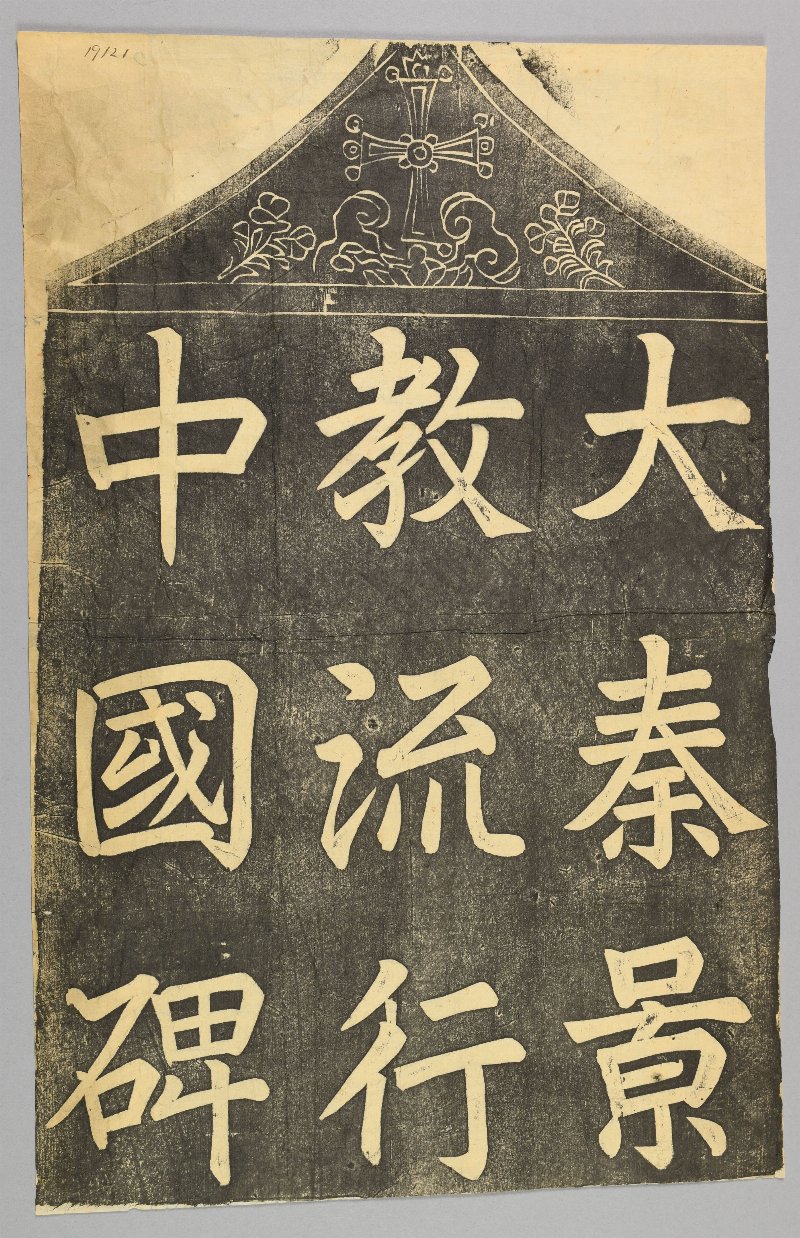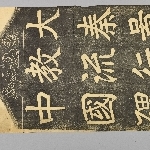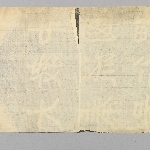| Object Number | 19121C |
| Current Location | Collections Storage |
| Culture | Chinese | Nestorian |
| Provenience | China |
| Date Made | 19th Century |
| Section | Asian |
| Materials | Paper |
| Technique | Rubbing |
| Inscription Language | Chinese Language |
| Description | Ink-squeeze rubbing from the Nestorian Christian stele of 781 CE in Xi'an, China, one of four in the collection (see 19121A-D). 19121C reproduces the Chinese heading text from the top of the stele, which reads "Stele Commemorating the Dissemination in the Middle Kingdom of the Illustrious Teaching [i.e. Nestorian Christianity] of the Great Qin (Da Qin Jingjiao Liuxing Zhongguo Bei 大秦景教流行中國碑)." "The Great Qin" referred to the Roman Empire, including its Eastern branch, and by extension to Christendom. Above the text is the Christian cross. The original stele, with text in Chinese and Syriac, was erected in 781 CE near the Tang dynasty capital, Chang'an, to commemorate the presence of Nestorian Christianity in China. The lengthy main text refers to doctrinal matters including monotheism, the Creation, the Trinity, and the Virgin Birth, before going on to describe the arrival of the religion in China and the protection it enjoyed under the Tang emperors. The remainder of the inscription consists of names of about seventy members of the clergy. The stele was rediscovered in the 17th century, and currently stands in the Beilin Museum, Xi'an. |
| Height | 45 cm |
| Width | 25 cm |
| Credit Line | Gift of Benjamin Smith Lyman, 1896 |
Report problems and issues to digitalmedia@pennmuseum.org.






